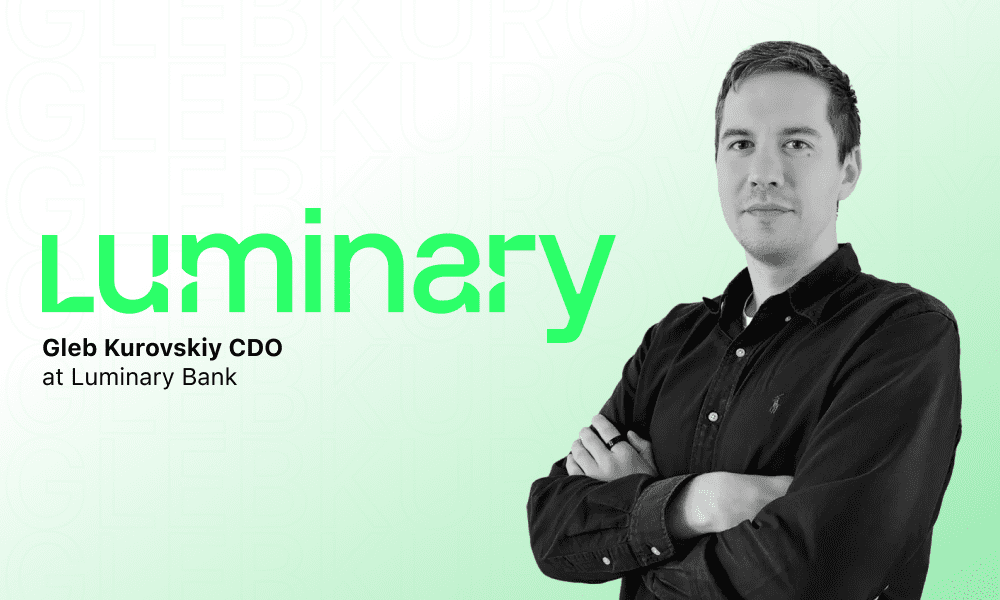Attention investors! Are you on the lookout for the next big thing in the cryptocurrency market? Well, look no further because we have an exciting contender to introduce: Polygon MATIC. With its meteoric rise and unmatched potential, this blockchain solution has captured the attention of both seasoned traders and newcomers alike. In this blog post, we’ll dive deep into what makes Polygon MATIC a game-changer and explore why it deserves your investment consideration. So buckle up as we unpack everything you need to know about this digital marvel that’s shaping the future of finance!
Introduction to Polygon MATIC
Polygon MATIC is a rapidly growing layer-2 scaling solution for Ethereum that has captured the attention of the crypto world. It started as Matic Network but rebranded to Polygon in February 2021 to better reflect its broader vision and capabilities.
But what exactly is Polygon MATIC and why is it gaining so much traction? In this section, we will provide a comprehensive introduction to Polygon MATIC and explore its purpose in the cryptocurrency space.
What is Polygon MATIC?
Polygon MATIC is a framework that utilizes various scaling solutions to improve the scalability and user experience of decentralized applications (DApps) on Ethereum. It acts as a sidechain for Ethereum, allowing DApps to leverage its infrastructure while bypassing the congestion and high gas fees on the main network.
MATIC, the native token of the Polygon network, plays a crucial role in securing and powering these scaling solutions. It serves as both a medium of exchange within the ecosystem and a governance token for decision-making processes.
In simpler terms, Polygon MATIC aims to make using DApps on Ethereum faster, cheaper, and more user-friendly by providing an off-chain processing platform with low transaction fees.
History and background of Polygon MATIC
Polygon MATIC is a blockchain scaling and infrastructure platform that has recently gained significant attention in the cryptocurrency world. With its innovative technology and partnerships with major projects like Ethereum, Polygon MATIC has quickly risen to become one of the most promising investments in the industry. However, understanding the history and background of this platform is crucial for any investor looking to enter this rapidly evolving market.
The idea for Polygon MATIC originated in 2017 when three Indian software engineers – Jaynti Kanani, Sandeep Nailwal, and Anurag Arjun – came up with an ambitious vision to address some of the scalability issues faced by existing blockchain networks. They recognized that although blockchains like Bitcoin and Ethereum had revolutionized how we think about decentralized systems, they were not designed to handle increasing transaction volumes efficiently.
In 2018, the team launched Matic Network as a Layer 2 scaling solution built on top of Ethereum. This allowed developers to deploy decentralized applications (dApps) on Matic Network without worrying about high gas fees or slow transaction speeds on the main Ethereum network. Matic Network achieved this by using a combination of Plasma sidechains and proof-of-stake (PoS) consensus mechanism.
After seeing successful adoption from dApp developers, Matic Network rebranded itself as Polygon in February 2021 and expanded its scope beyond just being a sidechain solution for Ethereum. The new name represents a broader vision to create a multi-chain ecosystem that enables seamless interoperability between different blockchains . This included integrating with other major blockchain networks like Polkadot, Binance Smart Chain, and Ontology.
In addition to providing scaling solutions, Polygon has also developed a suite of developer tools and infrastructure services to help developers build and deploy dApps easily. These include the Polygon SDK, which allows for seamless integration of Ethereum-compatible tokens into dApps, and Polygon PoS Chain, an Ethereum-compatible PoS chain that offers faster transaction times and lower fees compared to the main Ethereum network.
Polygon MATIC has seen a meteoric rise in popularity due to its impressive technology and strategic partnerships. In May 2021, Polygon announced a strategic partnership with Ethereum-based decentralized finance (DeFi) giant Aave. This collaboration would see Aave deploying its lending and borrowing protocols on the Polygon network, allowing users to access DeFi services at significantly lower costs.
In June 2021, leading centralized exchanges like Coinbase and Binance added support for MATIC on their platforms, increasing accessibility for investors and traders. This move also brought more liquidity to the MATIC market, causing its price to surge in value.
As of September 2021, the market capitalization of Polygon MATIC stands at over $13 billion, making it one of the top 20 cryptocurrencies by market cap. With its innovative technology and strategic partnerships, Polygon MATIC is poised to continue its growth and solidify its position as a leading blockchain infrastructure platform.
Comparison with other cryptocurrencies
Cryptocurrencies have been gaining widespread attention and popularity in recent years, with countless new coins being introduced into the market. One such coin that has been making waves is Polygon MATIC. While it may be new to some investors, its unique features and rapid growth have caught the eye of many.
In this section, we will explore how Polygon MATIC compares to other cryptocurrencies in terms of technology, use cases, and market performance. This comparison will give investors a better understanding of what sets Polygon MATIC apart from its competitors and why it has gained so much momentum.
Technology:
One of the major factors that differentiates Polygon MATIC from other cryptocurrencies is its underlying technology. Unlike Bitcoin or Ethereum, which use proof-of-work (PoW) consensus algorithms for transaction verification, Polygon uses a proof-of-stake (PoS) algorithm known as Plasma. This allows for faster transaction processing times and significantly lower fees compared to other cryptocurrencies.
Furthermore, Polygon’s architecture is built on top of Ethereum’s blockchain network, making it highly interoperable with existing decentralized applications (Dapps) on Ethereum. As a result, developers can easily port their Dapps onto the Polygon network without having to make significant changes to their code.
Use Cases:
While many cryptocurrencies are primarily used as stores of value or speculative assets, Polygon MATIC stands out due to its practical use cases. The platform aims to solve scalability issues faced by various decentralized finance (DeFi) protocols by providing a second-layer scaling solution on top of Ethereum . This allows for faster and cheaper transactions, making it a more user-friendly option for DeFi users.
In addition to DeFi, Polygon MATIC has also seen adoption in the gaming space. Its low transaction fees and fast processing times make it an attractive option for in-game transactions and payments.
Market Performance:
In recent months, Polygon MATIC has experienced significant growth, with its price surging from around $0.01 in January 2021 to over $2 in May 2021. This growth can be attributed to increasing adoption and partnerships, as well as the overall rise in the cryptocurrency market.
However, compared to other established cryptocurrencies like Bitcoin and Ethereum, Polygon MATIC’s market capitalization is still relatively small. This means that there is still room for growth, but also carries higher risks due to its volatility.
Advantages of investing in Polygon MATIC
There are many advantages of investing in Polygon MATIC, making it a popular choice among investors in the cryptocurrency space. In this section, we will delve into the various benefits that make Polygon MATIC an attractive investment opportunity.
1. Scalability and Lower Transaction Fees:
One of the main advantages of Polygon MATIC is its scalability, which addresses one of the biggest challenges faced by other blockchain networks such as Ethereum. Due to its Layer 2 solution, Polygon MATIC is able to process up to 65,000 transactions per second, significantly higher than Ethereum’s rate of 15 transactions per second. This means faster and more efficient processing times for users, leading to lower transaction fees compared to other networks.
2. Interoperability:
Polygon MATIC is designed as a multi-chain ecosystem that can operate with other blockchains seamlessly. This means that it can interact with different cryptocurrencies and decentralized applications (DApps) on various networks without any issues or need for additional development efforts. The ability for cross-chain communication allows for increased flexibility and potential new use cases for the platform.
3. Enhanced Security:
Another advantage of investing in Polygon MATIC is its high level of security. As a Layer 2 solution built on top of Ethereum’s established network, it inherits all the security features provided by Ethereum such as consensus mechanisms like Proof-of-Stake (PoS). Additionally, thanks to frequent audits and upgrades by the team behind Polygon MATIC, investors can be assured that their funds are protected against any potential security threats.
4. Lower Barrier to Entry:
Investing in Polygon MATIC is accessible to a wide range of investors due to its lower barrier to entry. Unlike other cryptocurrencies that require high minimum investments, Polygon MATIC can be purchased in smaller amounts, making it more affordable for new and small-scale investors.
5. Diverse Use Cases:
Polygon MATIC has multiple use cases, making it a versatile investment option. It is not limited to only one sector and can be used for a variety of purposes such as payments, decentralized finance (DeFi), and Non-Fungible Tokens (NFTs). This diversification of use cases allows for potential growth and stability in the long run.
6. Backed by a Strong Team:
The team behind Polygon MATIC includes experienced developers and advisors with a strong track record in the blockchain and cryptocurrency space. The team’s expertise and dedication to continuously improving the project make Polygon MATIC a reliable investment opportunity with potential for future growth.
7. Growing Adoption:
Polygon MATIC has seen significant adoption within the cryptocurrency community since its launch in 2019. Many well-known projects have already migrated or are planning to migrate to the Polygon network, bringing increased attention, usage, and investment opportunities for the platform.
Potential risks and challenges of investing in Polygon MATIC
Investing in any cryptocurrency comes with its own set of risks, and Polygon MATIC is no exception. While it has gained significant attention and popularity in recent months, it is important for investors to be aware of the potential risks and challenges associated with investing in this digital asset.
1. Volatility:
One of the major risks associated with investing in Polygon MATIC, or any cryptocurrency, is its volatility. The value of MATIC can fluctuate dramatically within a short period of time, which can result in significant gains or losses for investors. This is due to various factors such as market sentiment, regulatory changes, and competition from other cryptocurrencies.
2. Limited Adoption:
While Polygon MATIC has shown promising growth and potential, it is still a relatively new player in the crypto world. As such, there is limited adoption and usage of this network compared to more established cryptocurrencies like Bitcoin or Ethereum. This lack of widespread adoption could potentially hinder the growth and stability of MATIC’s value.
3. Competition from Other Layer 2 Solutions:
Polygon MATIC operates as a layer 2 scalability solution for Ethereum, meaning that it aims to improve the speed and cost-efficiency of transactions on the Ethereum blockchain. However, there are multiple other layer 2 solutions being developed and implemented by different projects, which could pose a challenge to Polygon’s dominance in this space.
4. Regulatory Uncertainty:
Cryptocurrency regulations are still evolving worldwide, and there is no clear consensus on how they will impact assets like Polygon MAT IC. Regulatory changes could potentially have a negative impact on the value and adoption of MATIC, creating uncertainty for investors.
5. Technical Risks:
As with any blockchain project, there are technical risks associated with investing in Polygon MATIC. These could include potential bugs in the code, security vulnerabilities, or network issues that could disrupt the functionality of the platform and affect its value.
6. Lack of Fundamental Data:
Unlike traditional investments such as stocks, cryptocurrencies lack fundamental data such as financial statements and company information that investors can use to make informed decisions. This makes it challenging to accurately assess the value and potential of a cryptocurrency like Polygon MATIC.
7. Liquidity:
Liquidity refers to the ease of buying and selling an asset without causing significant price fluctuations. Since Polygon MATIC is not as widely traded as some other cryptocurrencies, it may be more difficult to quickly buy or sell large amounts without impacting its price.
How to invest in Polygon MATIC
As a relatively new player in the cryptocurrency space, investing in Polygon MATIC may seem daunting to some investors. However, with its rapid growth and potential for further success, it’s no surprise that many are looking to add this digital asset to their portfolio. In this section, we’ll break down the steps on how to invest in Polygon MATIC and provide some tips for making informed investment decisions.
1. Choose a Trusted Crypto Exchange
The first step in investing in any cryptocurrency is to choose a reputable exchange platform where you can buy, sell, and store your digital assets. Some popular options for buying Polygon MATIC include Binance, Huobi Global, and KuCoin.
Before committing to an exchange, it’s essential to do your research and ensure that it has a good reputation within the crypto community. Look for exchanges with top-notch security measures such as two-factor authentication and cold storage of assets.
2. Create an Account and Verify Your Identity
Once you’ve chosen an exchange, the next step is to create an account by providing your email address, setting up a password and completing any other necessary verification steps depending on the exchange’s policies. These verification processes usually involve uploading a form of identification such as ID or passport along with proof of address documents.
3. Fund Your Account
After verifying your identity successfully, you can then fund your account using fiat currency or other cryptocurrencies like Bitcoin or Ethereum. Once you have the funds available in your account balance, you’re ready to purchase Polygon MATIC .
4. Place an Order
On the exchange platform, locate the MATIC trading pair (usually BTC/MATIC or USDT/MATIC) and enter the amount of MATIC you want to buy. You can either make a market order, which buys at the best available price on the market, or a limit order, which allows you to set a specific price at which you want to buy.
5. Securely Store Your MATIC
Once your purchase is complete, it’s essential to move your MATIC tokens from the exchange to a secure wallet that only you have access to. Hardware wallets like Ledger and Trezor are often recommended for holding large amounts of crypto assets as they provide an extra layer of security.
Expert opinions and forecasts for the future of Polygon MATIC
Expert opinions and forecasts for the future of Polygon MATIC are an essential aspect for investors to consider when analyzing their investment options. As the cryptocurrency market experiences rapid growth and increasing competition, it is crucial to understand where Polygon MATIC stands in terms of its potential for future success.
One key factor that experts have identified as contributing to the rise of Polygon MATIC is its unique layer two scaling solution. This technology allows for faster and cheaper transactions on the Ethereum network, addressing one of the biggest challenges faced by decentralized applications (DApps). With DApps gaining popularity in various industries such as finance, gaming, and NFTs, this scalability feature has sparked optimism among experts about Polygon MATIC’s future.
In addition to its technological advancements, other factors have also attracted positive opinions from experts regarding Polygon MATIC’s outlook. Its partnerships with major companies such as Google Cloud, Chainlink, and SuperFarm have raised its profile and opened up new opportunities for growth. Furthermore, its recent rebranding from Matic Network to Polygon represents a strategic move towards expanding beyond blockchain scalability solutions into a full-fledged multi-chain system.
Experts also predict that the increasing demand for blockchain-based services will continue to drive the value of cryptocurrencies like Polygon MATIC. With more businesses adopting blockchain technology and cryptocurrencies becoming mainstream investments, there is a growing need for fast and affordable transactions – something that Polygon MATIC can offer with its layer two scaling solution.
Conclusion
In conclusion, Polygon MATIC has quickly gained recognition as one of the top-performing cryptocurrencies in the market. Its innovative technology, scalability, and low transaction fees make it a promising investment for both experienced traders and newcomers to the world of digital assets. With its growing list of partnerships and developments, it is clear that Polygon MATIC is here to stay and will continue to disrupt the blockchain industry. As always, it’s important for investors to do their own research before making any financial decisions. But with all signs pointing towards success for this cryptocurrency, now may be a great time to consider adding Polygon MATIC to your portfolio.



































